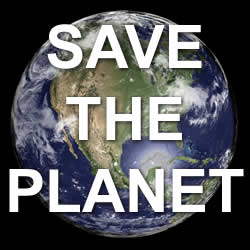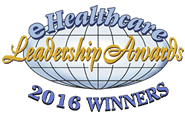Fish Farms: A Panacea Gone Wrong
Shilo Zylbergold | Best Medicine

image by: USDA NRCS CA
It is a mistake to think that salmon farms could replace the vital contributions that wild salmon lifecycles make to our home and community - Gisele Martin
Remember fish farming? Perhaps you recall all the hubbub raised when the concept was touted as the panacea for world hunger and global malnutrition. No longer would humankind have to scour the oceans of the earth to find edible protein, but instead fish could be harvested like a crop of wheat or barley. Aquaculture, as it was named, was purported to be a leap forward in civilization, something akin to a marine version of the transformation of society from food hunting to agriculture about one hundred centuries ago.
Actually, aquaculture is not really a totally modern technology. Using unearthed hieroglyphics and pictograms, archaeologists have been able to trace back its origins approximately 4000 years. In about 475 B.C., Fan Lai, a Chinese naturalist who studied the life cycles and behaviour of fish, authored “The Classic of Fish Culture” which chronicled the structure of ponds and the propagation of carp fry.
The modern form of aquaculture was introduced in Germany in 1733 when a fish farmer fertilized the fish eggs he had accumulated and then raised the resulting hatched fish as food. Fish farming, however, really took off as Big Business when it was embraced by Scandinavian countries in the 1970s. The methodology of utilizing giant enclosed fish pens in protected salt water coves turned aquaculture into a proverbial IKEA of marine food production. In 2017, for example, Norway harvested 890 million farmed salmon, which made it the number one agricultural animal in the country.
The trend towards aquaculture has been growing steadily around the globe. Biologists have estimated that at the present time, half the fish eaten around the world come from industrial fish farms. According to the World Bank Food and Agricultural Organization of the United Nations, 2/3 of the global food fish supply will come from fish farming by 2030.
Despite all the positive returns from aquaculture, it has not come up smelling of roses. Take British Columbia, Canada, for instance. Although there are approximately 4700 workers employed in the fish farming industry, and the economic activity generated by the farming of salmon alone accounts for about one billion dollars, the government is seriously considering clamping down on the enterprise to the point where it might be eliminated completely. Released reports have the Fisheries minister committing to remove the 79 remaining salmon farming licenses by this June. Furthermore, there is a proposal on the table to completely transition from netpen salmon farming in coastal British Columbia waters by 2025.
So why all the concerns and fuss about a technology that was supposed to end world hunger and food shortage? When all is said and done, it comes down to a matter of health risks and environmental damage.
The first problem involves antibiotics. Because farmed fish live in such a crowded environment, they are much more susceptible to disease than fish swimming out in the wild. The industry’s way of controlling disease is to feed them more and more antibiotics. This creates two new problems. First of all, the fish diseases become more resistant to the antibiotics, which leads to a greater quantity of the antibacterial drugs being used. Secondly, we humans ingest these antibiotics when we eat these farmed fish and thereby also decrease our resistance to a large variety of microbes because our immunity has been compromised or the invading organisms are not destroyed by antibodies that were once effective against them.
Another health risk comes from pesticides used as anti-fungal agents and to augment the effects of antibiotics in fighting off diseases derived from the overcrowded conditions so prevalent in fish farming. Carcinogenic pesticides, such as polychlorinated biphenyls (PCBs), dibutyltin, and dioxins, are just a few of the toxic chemicals that the fishmeal which is used to feed farmed fish is laced with. Even the small fish used to produce the fishmeal itself come from industrial fish farms around the globe and have also been treated with pesticides. To make matters worse, it takes up to five pounds of the wild, small fish used to make fishmeal to produce one pound of factory farmed salmon or bass. Hardly an economically viable means of food production!
Then there are the environmental concerns. Fish farming, by its very nature, almost certainly leads to ecological degradation. The overcrowding, the build-up of waste products, the fouling of bays and harbours, and the transmission of diseases and other dangerous parasites such as sea lice to the wild, indigenous stocks of fish make industrial aquaculture an exercise in Russian Roulette.
Why do they call it farming anyway? Do they have to herd the fish back into the pens at night? Do they utilize “fishdogs” (highly intelligent dog salmon or chum) to nip at the tails of the herd of fish to get them to swim in the right direction? Are there farm chores like mucking out the pens swabbing the sea bed? At least, you figure that they don’t have to be watered. Imagine the tumult and confusion when it comes time to brand the fish.
One also has to consider the rehabilitation of the farmed fish if they are to be reintegrated back into the wild stock. When it comes to salmon, they must relearn the lost instincts that have probably been bred out of them while they were living on the farm. They must be retrained in skills like knowing how to swim upstream, how to dig a spot in the river gravel for their eggs to hatch, and how to find their way back to their original spawning grounds. If they are Atlantic salmon that have been farmed on the west coast, hopefully they won’t have to find their way through the Panama Canal in order to spawn and die.
There was a popular song written during World War 1 which had a chorus that went, “How ya gonna keep ‘em down on the farm, after they’ve seen Paree?” As far as fish farming is concerned, you might ask the same question except substitute “the sea” for “Paree”. Hopefully, sanity will prevail and industrial aquaculture may just be a bad memory before too much longer.

Introducing Stitches!
Your Path to Meaningful Connections in the World of Health and Medicine
Connect, Collaborate, and Engage!
Coming Soon - Stitches, the innovative chat app from the creators of HWN. Join meaningful conversations on health and medical topics. Share text, images, and videos seamlessly. Connect directly within HWN's topic pages and articles.









.jpg)






